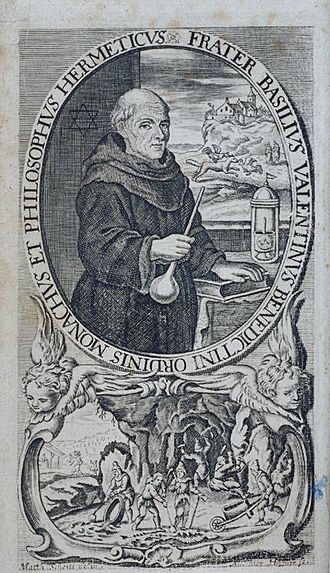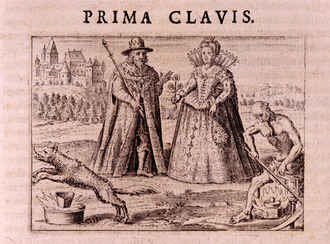Basil Valentine facts for kids
Basil Valentine is the English name for Basilius Valentinus. This name was used by someone who wrote about alchemy in the 15th century. People thought he was a monk from the Benedictine order in Erfurt, Germany. However, it is more likely that "Basil Valentine" was a pseudonym. A pseudonym is a fake name used by one or more German writers in the 16th century.
Historians like John Maxson Stillman, who studied the history of chemistry, found no record of anyone named Basil Valentine. There is no mention of this name before the year 1600. It seems that his story and even his picture were made up later, after his writings became popular.
In the 1700s, some people thought that a salt maker named Johann Thölde (who lived from about 1565 to 1624) wrote the books under the name Basil Valentine. Today, experts believe that Thölde was one of the authors. But it is possible that other writers were involved too. Thölde was the first to publish five books using Valentine's name.
Whoever wrote these books, Basil Valentine showed a lot of knowledge about chemistry. He explained how to get ammonia from other chemicals. He also described how to make hydrochloric acid from common salt. He even created ethyl chloride and sulfuric acid. These were important discoveries for his time.
The Twelve Keys of Basil Valentine
The Twelve Keys of Basil Valentine is a famous book about alchemy. It was first published in 1599 by Johann Thölde. The book has two parts. The second part contains the "twelve keys." These keys are like steps or secrets in alchemy. Later versions of the book, from the early 1600s, included woodcut pictures to go with the keys.
See also
 In Spanish: Basilius Valentinus para niños
In Spanish: Basilius Valentinus para niños
- List of Catholic clergy scientists
Images for kids





